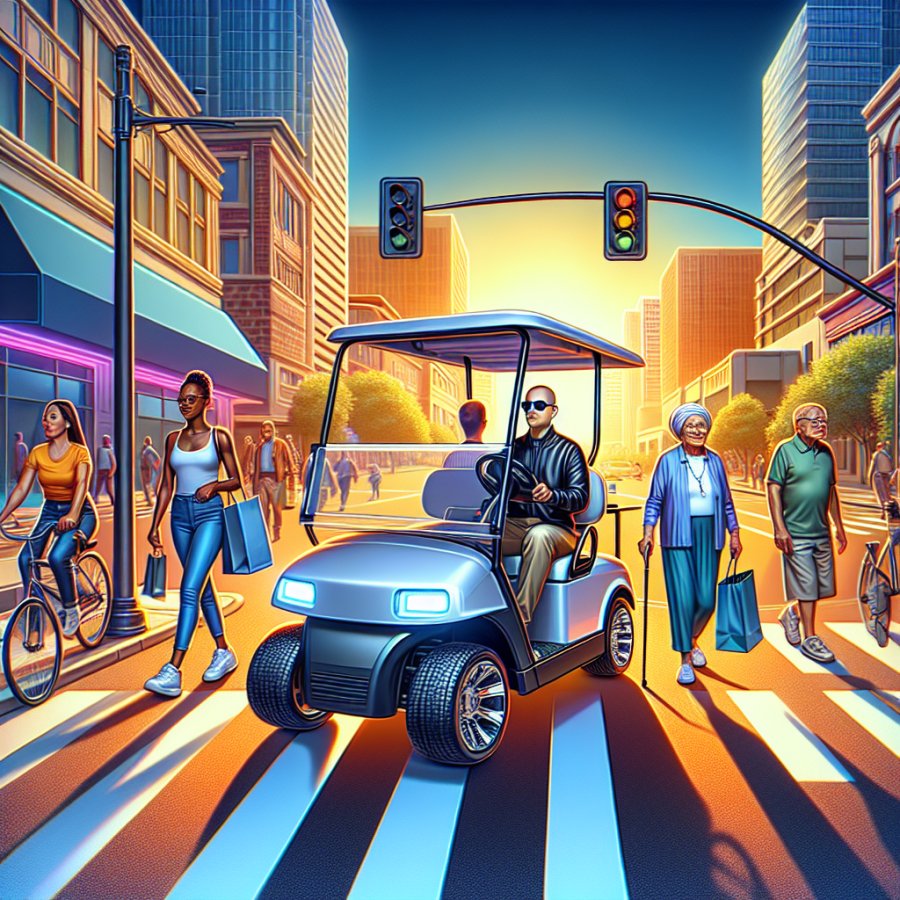Factors to Consider When Taking Your Golf Cart from The Green to the Street
Taking your golf cart from the green to the street can be a convenient way to get around your neighborhood, particularly in areas where cart travel is commonplace. However, before you decide to make this transition, there are several important factors you need to consider.
Firstly, not all golf carts are built for street driving and not all streets are legally open for golf carts to use. Some golf carts may lack the necessary equipment to be street-legal in your city or state. Regulations usually require features like seat belts, turn signals, and rearview mirrors for safe navigation on a street.
The comfort, capacity, and size of your golf cart should also be looked into. Traditional golf carts often have two seating spaces, but if you plan on using your cart for more than just solo trips, you may want to find cart models with larger capacities. Furthermore, some golf carts may be too large to safely navigate certain residential streets or parking spaces, making them unsuitable for street use.
Moreover, it’s essential to examine your golf cart's speed capabilities. Typically, golf carts are designed to move slowly, often topping out at around 15 miles per hour. If you're going to be using your cart on the street, you'll need one that can keep up with traffic and not become a road hazard.
It is equally important to ascertain the cost implications of making your golf cart street legal. Modifying your golf cart to meet street legal requirements can be a significant expense. Budgeting for changes in terms of cost and time will give you an idea of whether it's a feasible decision.
Verify the legality aspect. Each state has different rules when it comes to golf carts on the road. Some places allow them in certain areas or at specific times, while others outright ban them. It's vital to understand where and when, if at all, you can drive your golf cart on public property.
Finally, consider the insurance and license plate registration requirements. You may need a special license to drive a golf cart on the street, or you might have to register it in a certain way. Plus, insurance may be mandatory in your area, and the premiums can vary.
Taking your golf cart from the green to the street is a substantial shift and takes careful planning. These factors highlight important areas to think about so you can make an informed decision to ensure a safe and legal ride.
Read also:
Understanding the Regimen: A Detailed Look into the Daily Life of Soccer Players
Understanding the Legalities: Making Golf Carts Street Legal
Navigating the processes and regulations for making golf carts street legal can seem like a daunting task. To make this task less intimidating, we will go through some general steps and considerations that will help you in your journey.
The main question that you need to consider is whether golf carts can be made street legal in your area or not. The answer is that golf carts can indeed be made street legal in many areas, but this typically depends on local, state, and regional laws.
Firstly, it is important to understand the definition of a street legal golf cart. According to U.S. federal law, street-legal golf carts, also known as low-speed vehicles, are those that can reach speeds of 20–25 mph, have a VIN, and are equipped with safety equipment such as headlamps, stop lamps, turn signal lamps, tail lamps, reflex reflectors, parking brakes, rearview mirrors, windshields, seat belts, and vehicle identification numbers.
Just remember, this does not mean all golf carts can legally be driven on all streets. You need to check and verify whether your local jurisdiction allows golf carts on their roads or not.
Assuming you've cleared that hurdle, the next step is to ensure your golf cart complies with local safety standards. This typically involves installing necessary safety equipment. The common items needed to convert a golf cart into a street-legal vehicle include headlights, taillights, turn signal, a windshield, rearview mirrors, seat belts, and an appropriate exhaust system. Keep in mind that this list is generalized and would vary based on your local jurisdiction's regulations.
Apart from hardware modifications, you may also need to have insurance for your golf cart. Many jurisdictions require proof of insurance before you can get street-legal status. Similarly, a driver's license may also be a requirement in many areas.
One more crucial requirement you might come across is an inspection of your golf cart after modifying it to meet street-legal requirements. Local authorities do not just take your word on your golf cart's street legality. They would want to inspect, and in some cases, they might also require a mechanic's certification stating that all modifications were done correctly.
Going through this process may seem like a headache, but remember, these rules and regulations are in place to ensure your safety along with that of other road users.




